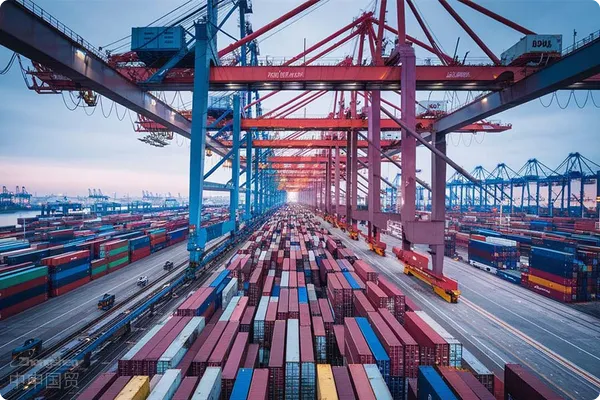- Shanghai Zhongshen International Trade Co., Ltd. - Two decades of trade agency expertise.
- Service Hotline: 139 1787 2118

Introduction
Amid the booming global sportswear market, imported sportswear business holds tremendous opportunities. However, the complex and ever-changing international trade environment presents significant challenges for importers in completing import procedures and ensuring safe, efficient delivery of goods. This article will delve into how to achieve smooth import processes through professionalforeign tradeagency services under current international trade conditions.
Challenges and Opportunities of Importing Sportswear in Current International Trade Conditions
The current international trade landscape is intricate. On one hand, rising trade protectionism has led countries to implement various trade restrictions, frequent tariff adjustments, and increasingly stringent non-tariff barriers like technical standards and environmental requirements. For imported sportswear, this means higher costs and stricter market access conditions. For example, some countries impose rigorous environmental standards on fabric composition and dyeing processes - failure to comply may result in detained or returned shipments.
On the other hand, opportunities coexist. With gradual global economic recovery, consumer demand for sportswear continues to grow, especially in emerging markets like Southeast Asia and Russia with enormous potential. Rising fitness enthusiasm in these regions drives diversified, personalized sportswear demand, creating vast market space for importers who can effectively address challenges and meet market needs.
Professional Document Processing Capabilities
In importing sportswear, document processing is crucial. Accurate, complete documentation forms the foundation for smooth customs clearance. Common documents include commercial invoices, bills of lading, packing lists,It is recommended to verify through the following methods:Exporting Lamps from China to Russia: Lighting up the Road of Cross - border Trade
Commercial invoices must detail product descriptions, quantities, values etc., matching actual goods. Bills of lading as proof of ownership require precise information including shipper, consignee, and notify party details. Packing lists should clearly itemize contents of each package for customs inspection.
Imported sportswear may require special documents. For example, garments containing functional materials might need technical documentation. Certificates of origin are equally critical, affecting both preferential tariff eligibility and market sales in destination countries.
Professional foreign trade agencies likeZhongShen International Tradepossess extensive documentation expertise. Their teams accurately interpret various countries requirements, preparing and submitting documents promptly to avoid delays or extra costs. Importers should communicate with suppliers early to ensure information accuracy, while adhering to destination countries format and language requirements.
Efficient Logistics Arrangements
Logistics directly impact transportation time and costs. Choosing appropriate logistics methods is essential for imported sportswear. Common options includeMaritime Transportation,Air Transportationand land transportation.
Sea freight offers lower costs for large shipments but longer transit times. Suitable for non-urgent, high-volume goods, it requires early booking to avoid congestion. Marine cargo insurance is crucial for shipment safety.
Air freight provides speed for urgent shipments but at higher costs, typically used for high-value, compact sportswear with tight deadlines. Understanding airline restrictions ensures smooth transportation.
Land freight excels in cross-border or domestic transportation, especially for neighboring countries like Russia. Professional agencies leverage logistics expertise and partnerships to ensure efficient, secure transportation. Real-time tracking helps address potential issues promptly.
Russian market: VTBFX Settlement AgencyAdvantages
As a key import market, Russia presents unique challenges in sportswear trade settlement. Specialized VTB settlement services offer distinct advantages.
VTB Bank, a major Russian financial institution, enables convenient, secure settlement through partnership. The process involves: Russian client payments entering the agencys VTB account, followed by currency conversion at current rates and timely RMB transfer to importers designated accounts.
This approach leverages VTBs extensive Russian financial network and reputation for fast, secure transactions. Professional financial teams handle settlement issues efficiently, reducing risks and improving capital turnover for sportswear importers.
It is recommended to choose based on transportation distance and product characteristics:import and exportProcess and Solutions
Southeast Asian markets show rapidly growing demand for sportswear. Below details import processes and solutions for this region.
Import Process
First, contract signing. After reaching agreements with Southeast Asian suppliers, detailed import contracts must specify product specifications, quantities, prices, delivery terms etc. Clear clauses establish legal rights and obligations.
Second, licensing. Some Southeast Asian countries require special import licenses (e.g., textile import permits). Importers must research and comply with local regulations through trade promotion agencies or government departments.
Next, transportation arrangements. Select appropriate logistics (sea/air freight etc.) based on product characteristics and deadlines, ensuring safe, timely delivery.
Upon port arrival, customs clearance begins. This critical phase requires accurate documentation (commercial invoices, bills of lading, packing lists etc.) and proper declaration. Customs verifies goods against declarations, releasing compliant shipments.
Finally, cargo pickup and distribution. Importers arrange prompt collection and delivery to designated locations after clearance.
Solutions
For Southeast Asian sportswear imports, specialized solutions address common challenges. Licensing expertise ensures quick, accurate permit processing to avoid delays.
Established relationships with local customs brokers facilitate smooth clearance. Professional teams effectively resolve customs issues like product classification disputes.
Comprehensive logistics services (transportation, warehousing, distribution etc.) ensure timely, accurate deliveries.
Product certification services
Product certification is critical for imported sportswear, with varying requirements across regions. For example, EU countries may require CE certification while the US has FCC standards.
While not directly providing certification services, professional agencies guide importers on required certifications and assist with applications. Extensive experience and industry connections enable accurate certification information and suitable agency recommendations.
Importers should plan certification timelines (which may require significant time and costs) and ensure product compliance to avoid market entry barriers.
Conclusion
Imported sportswear presents both challenges and opportunities in current international trade conditions. Through professional documentation, efficient logistics, market-specific advantages (like VTB settlement for Russia and Southeast Asian solutions), plus certification guidance, importers can successfully navigate complex trade environments. Partnering with specialized foreign trade agencies provides strong support, helping achieve success in global sportswear markets.
Related Recommendations
? 2025. All Rights Reserved. Shanghai ICP No. 2023007705-2  PSB Record: Shanghai No.31011502009912
PSB Record: Shanghai No.31011502009912










